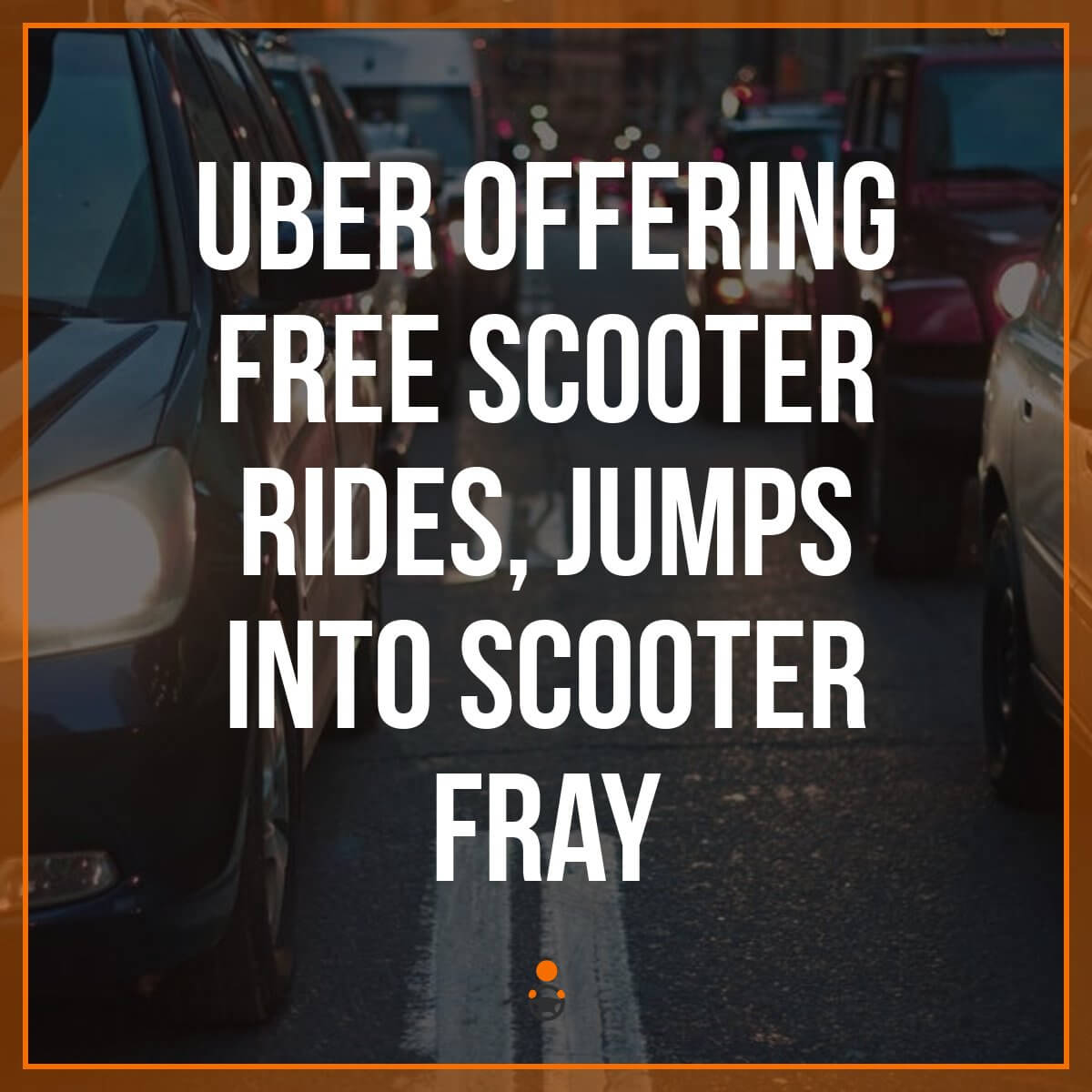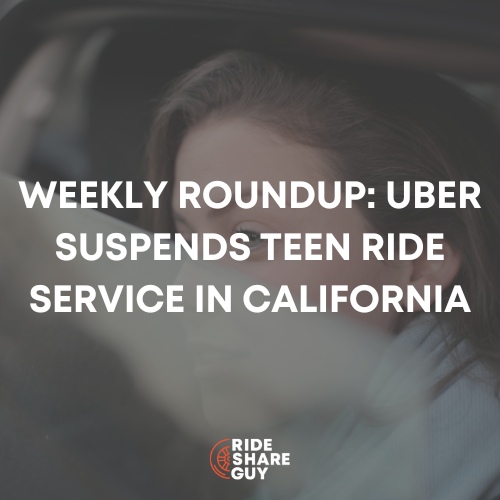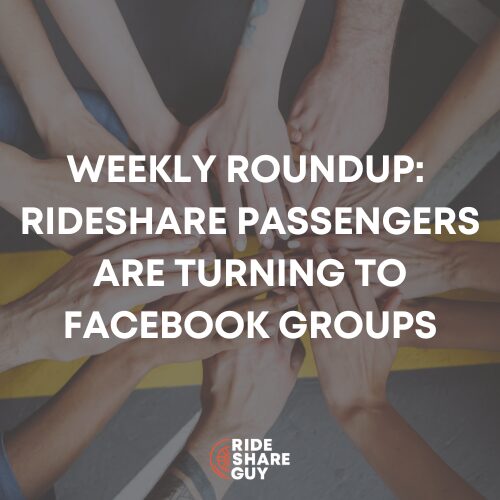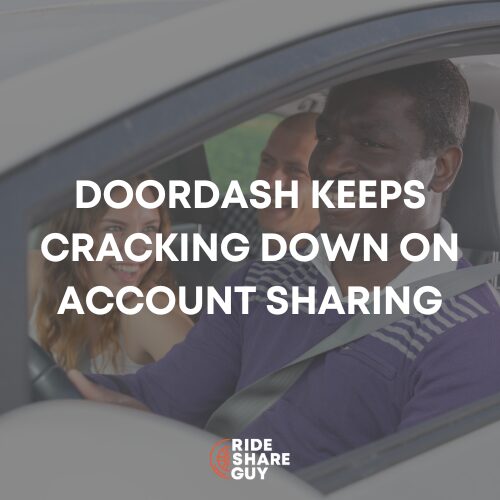Join us for our October YouTube live on Tuesday October 9 at 5pm PT! You can subscribe to our Youtube channel here and be sure to turn on notifications (instructions here) so you know when we go live.
Are we still discussing ‘should you tip your driver’ articles? Apparently, we are. Senior RSG contributor John Ince covers this debate, plus Uber gets more involved in the scooter wars, kids are still taking Ubers, and Lyft Driver Advisory Council news.

Uber launches first electric scooter share, offers free rides in first week [Electrek.com]
Sum and Substance: Electric scooter share programs continue to expand at a rapid pace across the United States and the rest of the world. Uber, known for its ride-hailing service, doesn’t want to miss the boat. Seeking its own piece of the pie, Uber has just rolled out its Jump electric scooter share program in Santa Monica. Uber recently purchased Jump, a dockless electric bicycle sharing company, in a deal reportedly worth over $100 million…
In an attempt to cutting into competitors’ market share, Jump electric scooters will be free to use until October 7th, according to TechCrunch. Jump hopes that this will help it establish its electric scooters in a still young industry.
Jump’s electric scooters work very similarly to other companies. The scooters are dockless, meaning they can be parked anywhere in the service area. New riders simply scan them on their phone and start riding the scooters. Rides cost $1 to begin and 15 cents per minute afterwards. Most rides end up costing between $2-$4. The same Uber app which is used to hail a rideshare is also used to located and claim a Jump electric scooter.
My Take: Scooters, electric bikes and regular bikes continue to get an outsized share of the news in part because they’re so controversial. They’re also attracting attention because they’re visible, both the scooters/bikes themselves and the companies behind them – and their gigantic valuations.
From my seat in the bleachers, I think these companies are overhyped and potentially overvalued. Investors haven’t even begun to factor in the potential liabilities of riders who are in crashes. One reason these companies are attracting such astronomical valuations is that their natural suitors (Uber and Lyft) are still flush with cash and don’t want to miss out on the next big thing in transportation.
Should You Tip Your Uber Driver? If So, How Much? [New York Times]
Sum and Substance: Uber added tipping to its app just over a year ago, and other rideshare services have allowed riders to tip their drivers for longer than that. But do drivers expect you to tip? Do they rely on them?
When it launched in 2012, Uber’s original stance on tipping drivers was that it would make using the app more of a hassle for drivers and passengers. “In the end, we decided against including one because we felt it would be better for riders and drivers to know for sure what they would pay or earn on each trip — without the uncertainty of tipping,” the company wrote in a 2016 blog post in response to two class-action lawsuits.
After public pressure and complaints from drivers, Uber ultimately decided to change its policy in July 2017. Competing apps like Lyft had launched by that time with the option built-in, and Via and Juno also allow riders to tip their drivers (though Juno only allows this if you also leave the driver a five-star rating).
My Take: Not a lot of new information in this article. Nevertheless, it’s nice to see the New York Times raising the profile of the tipping issue in this article. My initial experience with tipping after the option was added to the app was that overall my tips remained the same and perhaps even declined. The reason? When tipping in person (cash) people were reluctant to give less than $5. But with the app, tips came in $1 and $2 denominations. What’s been your experience with tipping now that Uber has the option in the app?
Teens headed to homecoming say Uber driver told them to get out due to age [AJC]
Sum and Substance: Teenagers in Gwinnett County say they were on the way to their homecoming dance when an Uber driver found out they were 16 years old — and made them get out of the car. The four teens were essentially stranded at a busy intersection, near the corner of Grayson Highway and Hillside Drive in Grayson, according to Channel 2 Action News.
Uber’s rules do not allow people under 18 to ride without an adult with them, but the students’ parents told the news station that the driver made the wrong decision by making them get out.
My Take: Oh my. How many times have we seen this same issue surface? Uber continues to kick it under the rug without resolution. The driver is painted as the bad guy in this story and in the minds of the public, but he was doing his job. He’s not allowed, under Uber’s terms of service, to transport anyone under 18 without a supervising adult.
But the rule is widely ignored and Uber does absolutely nothing to educate passengers. Why? Because they want the business. By including it in their TOS, Uber has given themselves legal cover and shifted liability to either the passenger or the driver. The whole things doesn’t smell right. I hope Uber, under new CEO Dara Khosrowshahi, will finally address the issue to prevent drivers being put in an awkward situation like this, not to mention legal jeopardy.
Uber Will Spend $10 Million to Solve a Problem It Helped Create [New York Times]
Sum and Substance: The extraordinary rise of Uber has transformed the ride-hail industry and in some cities, including New York, it has contributed to increased congestion. Now, Uber, in a move that was met with derision by critics, says it wants to help solve some of the problems it has helped cause.
The company announced on Wednesday that it would spend $10 million to help cities develop more efficient transportation policies and reduce congestion and vehicle emissions. The money will be given out over the next three years as part of a campaign by Uber to support efforts around the world to get more people to leave their personal cars at home and take greener alternatives such as car pools, public transit and bikes. To that end, some of the money will be used to advocate for congestion pricing plans, which charge drivers for entering the busiest neighborhoods at peak traffic times.
Uber, which has long guarded data collected by its vehicles, will also release data on the speeds traveled on individual streets to more cities to help them better assess traffic conditions and manage congestion.
My Take: I suppose that $10 million is a nice gesture, but relative to the scope of the problem, which Uber has in part helped create, it’s not going to make much of a difference – other than the positive PR it brings to the company.
Driver Advisory Council Applications Open Until October 16 [Lyft Hub]
Sum and Substance: We are searching for a diverse group of drivers in the United States and Canada who want to represent their communities in our Driver Advisory Council in 2019. Complete this form by October 16, 2018 to be considered.
Drivers who are the right fit for the DAC will answer “Yes” to all these questions:
Do you believe in the power of community?
Are you passionate about Lyft’s vision for improving people’s lives with the world’s best transportation?
Do you want to give constructive feedback to Lyft on behalf of your fellow drivers?
Do you have ideas for how Lyft can improve the driver experience?
Are you excited to test new features in the app?
DAC members enjoy a close relationship with Lyft to help us stay connected with the driver community, generate innovative ideas, and share feedback to help improve the driver experience.
[Editor’s Note]: We’ve covered the Lyft Driver Advisory Council before, and we believe it has created real, positive change for drivers. If you’ve been wanting to have your voice heard by rideshare companies, applying to be a part of Lyft’s DAC is an excellent way to get started. You can apply here (scroll to the bottom).
Readers, what do you think of this week’s round up?
-John @ RSG





